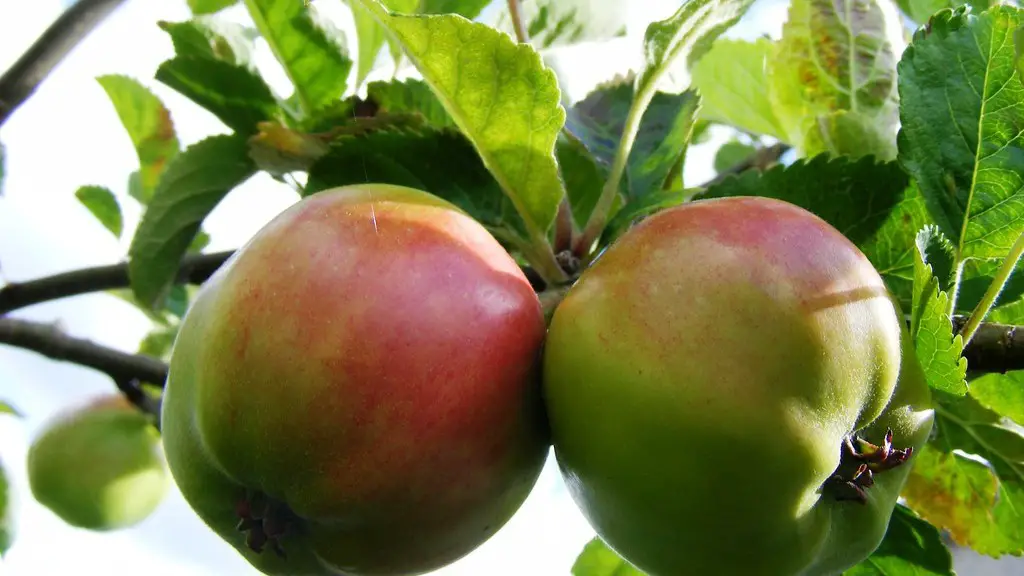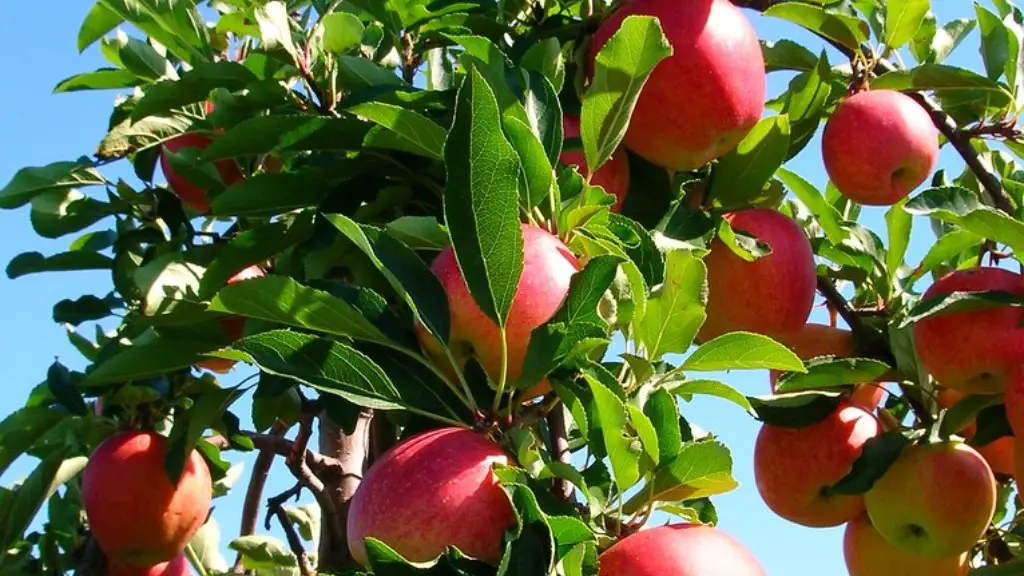Apple trees should look neat and tidy when they are pruned properly. It is important to know how and when to prune your apple tree so that it will stay healthy and give you an abundant harvest year after year. Pruning an apple tree correctly will help to keep the tree vigorous, prevent disease and produce good-sized apples.
When pruning apple trees, it is important to position the cuts correctly. Make angled cuts starting outward from the main branches; cut the branch off at a 45-degree angle. Keep the cuts tidy and avoid leaving long stubs. Prune off any twiggy shoots that do not have fruit forming at the tip. These will suck the energy from the main branches and limit the fruiting potential of your tree.
Dead, diseased and crossing branches should be removed. Dead wood will provide a gateway for diseases and can obstruct the growth of the tree. Remove one of the crossing branches to encourage the other to grow outward away from the center of the tree.
The vigor of the tree should be kept in check. This can be done by keeping the shoots pruned. When they are too long they become excessively vigorous and the energy needed to support them will strain the tree, which can congest the branches. Keep the central and main branches limbed up and the shoots pruned to 3-4 buds.
Finally, the formation of the canopy should be taken into account when pruning apple trees. Having an open and evenly spread canopy will give you better sun exposure and airflow, which can reduce the risk of disease in your tree and ensure good pollination.
Creating a Strong Framework
When pruning an apple tree, it is important to create a strong framework to ensure the tree has plenty of support. This is best done by selecting the scaffold branches, which should be spaced evenly around the tree and not competing with each other. Cut away any branches that are too close together; this will open up the canopy and allow more light and airflow to penetrate the tree. This will ensure a better quality apple harvest by promoting better fruit set.
Select 3-4 main branches to become the scaffold branches and cut away anything that is growing out of them. As the tree matures, add in additional scaffold branches that are evenly spaced and healthy. Remember to prune regularly by removing the excess shoots and thinning out older branches.
Uniformity and Balance
Pruning your apple tree properly will give it an attractive balance and uniformity. All the branches should be pruned at the same height, as vigorous branches should not be allowed to overshadow the scaffold branches. Cut away any excess material evenly throughout the tree to maintain a uniform and attractive shape. This will lead to a better fruit harvest and ensure that all fruits ripen at a similar time.
To maintain a healthy tree, regularly inspect the tree for dead, diseased or crossing branches. Remove these when you see them to prevent them obstructing shoot and fruit production. Removing these branches will also reduce the potential for disease.
Balancing the tree is also key to successful pruning. Balance the weight of the canopy by removing any half branches that have a tendency to break and check you have evenly spread the branches. All branches should be limbed up to open up the center of the tree to provide light and air.
Training Young Trees
If you are fortunate enough to train young apple trees, it’s essential to shape them as early as possible. Aim to raise the branches as much as possible in the first year. Disbudding any side shoots will give you the desired appearance of evenly spaced throws and make it easier to identify any crossing or dead shoots. Use handsawing rather than shears to avoid jagged edges. Pear trees should also be pruned in this step.
In subsequent years, the aim of pruning is to balance the growth of the tree and keep the scaffold branches well-spaced and evenly balanced. This will ensure the best light penetration and airflow, which will ensure success later in the season. It is also vital to prune regularly to keep the tree’s shape.
Finally, pruning of apple and pear trees should end in late winter or early spring. Avoid pruning at other times of the year when the tree is actively growing, as this can encourage the growth of soft new shoots. Aftercare is also important – water your tree well and mulch to help decomposition and reduce weeds.
Pruning for Production
When pruning for production, the goal should be to maximize the amount of fruit that is produced. In the first year, apple trees should be pruned to maximize the amount of fruiting wood. Select a few branches that have fruiting buds, remove any half branches or dead wood, and then thin the shoots so that five or six remain per branch. This will help to create an open canopy and check the growth rate of the tree.
In subsequent years, thinning should focus on the fruit-bearing branches. Disbud short-spurred varieties and thin out excess shoots to three or four buds per branch. Sprays of fruit should be thinned to two or three fruits. For spur varieties, thin the clusters of fruit to increase the size of each individual fruit. Remove any crossing and diseased branches, and balance the tree by pruning and thinning evenly on both sides.
Finally, thinning the apple trees should take place in May and again in June, with dead wood and crossing branches removed at any time. More pruning may be required for trees that have grown excessively and need to be renovate.
Health Benefits of Pruning
Pruning your apple tree correctly offers many health benefits, both for the tree and for the fruit it produces. Removing dead, diseased and broken branches helps to prevent diseases from taking hold. Pruning also increases airflow through the tree and improves sunlight exposure, both of which can help to reduce the risk of disease by stopping fungal and pest infestations. Proper pruning can also help to reduce overcrowding and allow the tree to focus its energy on producing high-quality apples.
Thinning an apple tree also helps to maintain a healthy tree. This is done by removing excess shoots and thinning out overgrown branches, allowing the tree to use the energy it has more effectively. This can also help to reduce the risk of limb breakage and improve the overall vigor of the tree. Doing this regularly helps to prevent damaged and congested branches that can lead to diseases and poor fruit production.
Finally, pruning trees can encourage larger and better-quality fruit production. This is done by selecting the branches with the most productive buds and thinning the clusters of apple fruit. When done correctly, pruning can increase the size, quality and quantity of fruit produced by your tree, giving you a healthy and enjoyable harvest.


